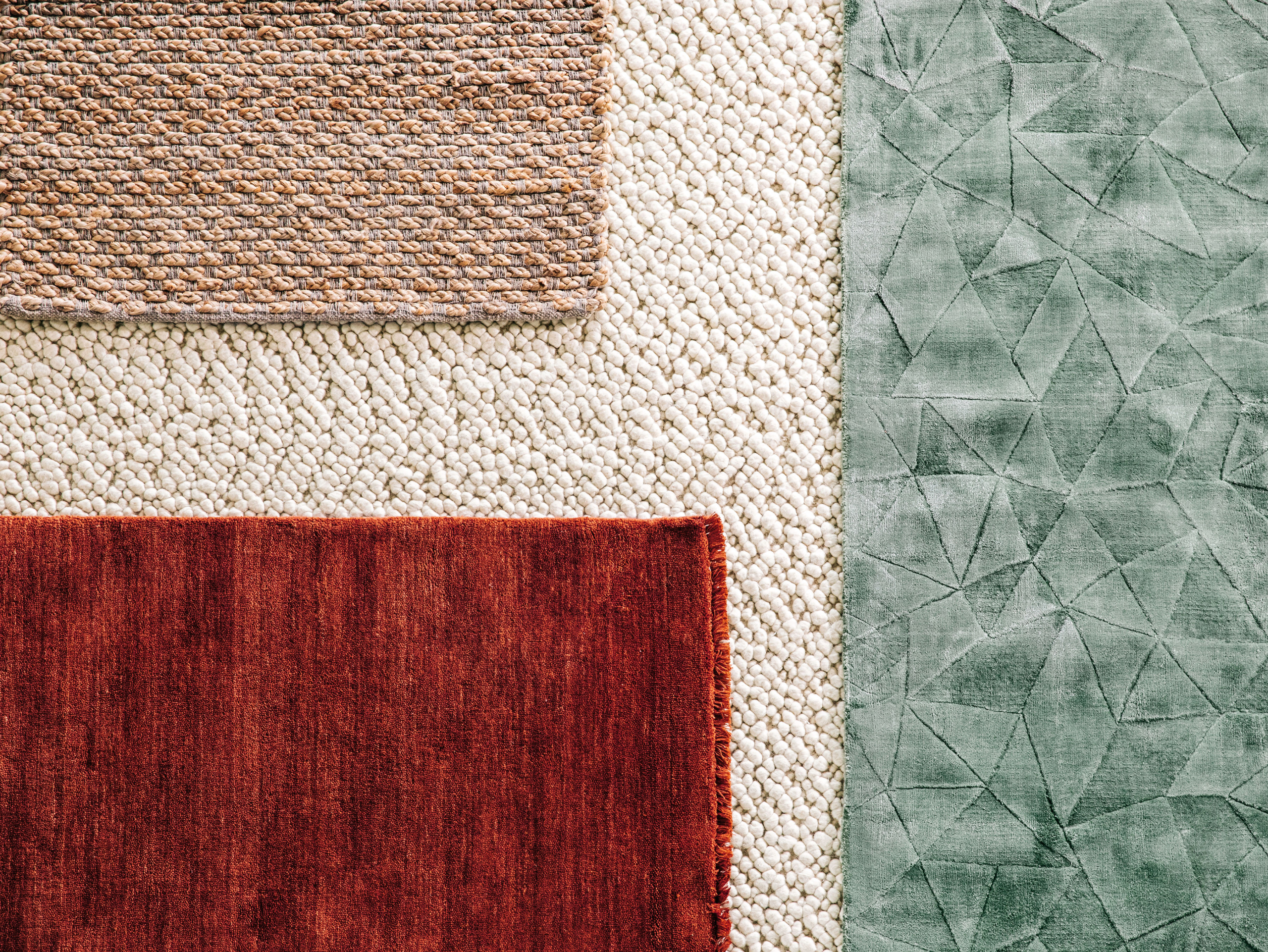Rugs are a beautiful and valuable addition to any room, but there are so many choices that it can be hard to choose the right one. This blog post will look at the different ways some rugs are made and talk about the pros and cons of each.
Here is a look at some of the most common rug options and their pros and cons.
Hand-knotted rugs
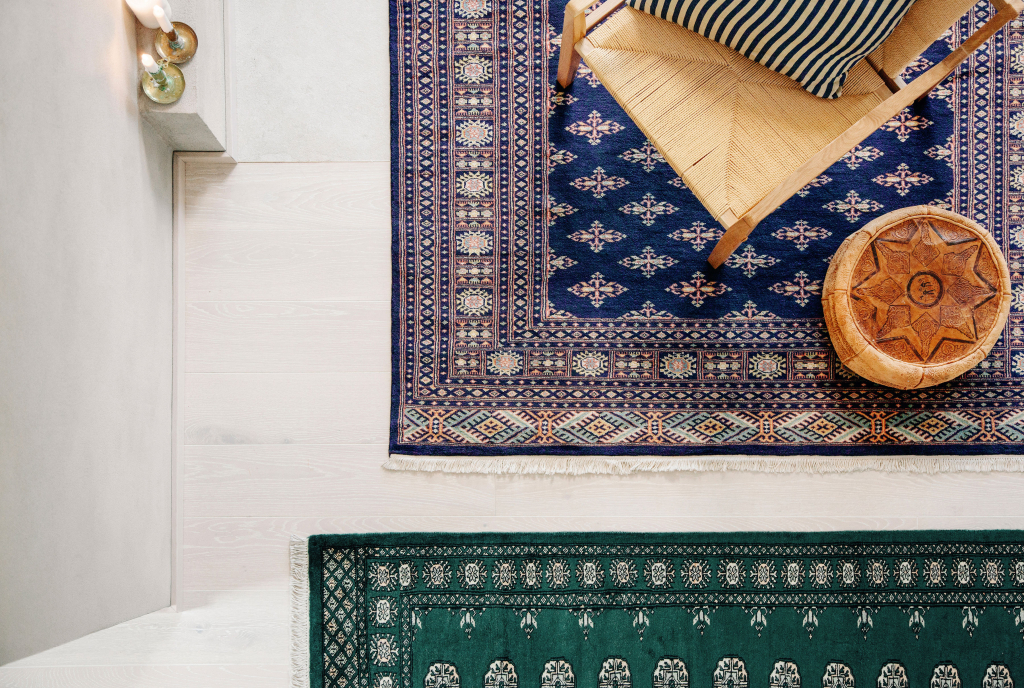
These unique rugs, made by hand using traditional methods, are considered to have the best quality and craftsmanship and to last the longest. The density and quality of the pile may depend on the material, how many knots are tied on top of the warp threads, and how tightly they are tied together. They take the longest to produce and have the highest production costs, but they are frequently considered the best long-term investments. The hand-knotted rugs are divided into various subcategories, including Persian rugs, Afghan rugs, Ziegler rugs, Kazak rugs, and traditional Chinese rugs.
Pros:
- The general consensus is that hand-knotted rugs are the highest quality and have the longest lifespan.
- The high knot density in many of these products results in a thick and luxurious pile.
- Hand-knotted rugs are considered a long-term investment due to their durability, history, and craftsmanship.
- These rugs are exclusive and unique handmade products.
- Very durable and easily cleaned rugs which can easily be placed in any high-traffic area.
- Due to their excellent insulation qualities, these rugs make a fantastic choice for adding warmth to a space.
Cons:
- Traditional rugs made by hand are the most labor-intensive and costly to make.
- Since they are unique, you will not be able to find an exact match should you need multiple items for a larger project. However, many designs are timeless and repeated, so finding matching options can be done.
- Being often traditional pieces, the design variation may be limited if you are looking for a more contemporary design.
Hand-tufted rugs
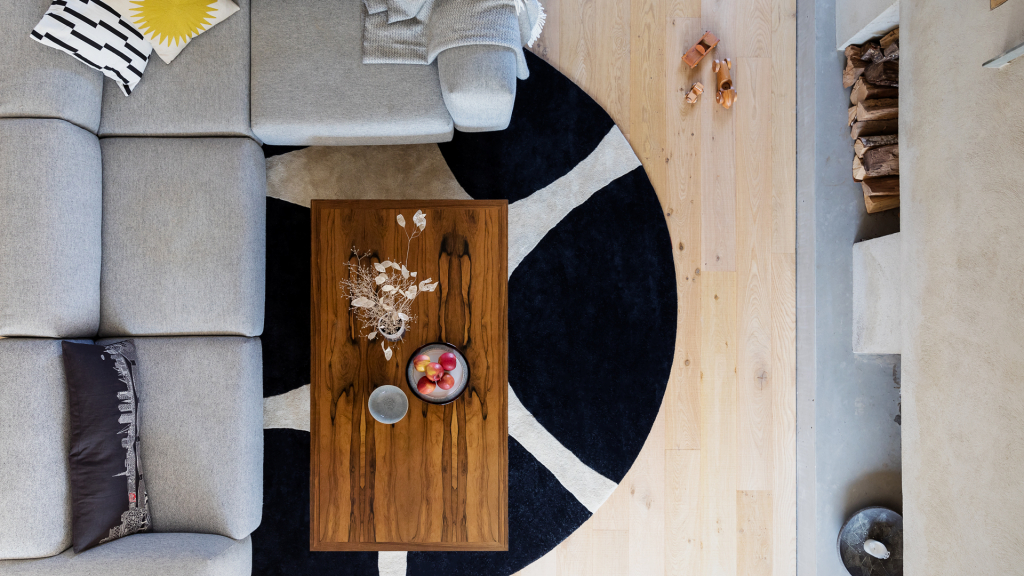
Hand-tufted rugs are produced by yarn being pushed into the rug’s fabric backing using a tufting gun, and the thread is then cut on top of the rug to produce a pile. They offer much value for money, being high-quality, durable rugs, but at the same time, with shorter production time than hand-knotted rugs.
Pros:
- Handtufted rugs are usually less expensive than hand-knotted rugs.
- They can be made in various designs, colors, materials, and sizes, making them versatile and customizable.
- Easy to clean and maintain. Handtufted rugs are made with strong yarns and a sturdy canvas backing, making them durable and long-lasting, ideal for busy public spaces and high-traffic areas.
- These rugs also have great insulation qualities. However, the effect is somewhat lower than hand-knotted rugs because they often have a lower knot density.
Cons:
- The pile of hand-tufted rugs might flatten somewhat or wear with time, depending on the pile height, compared to hand-knotted rugs.
- Handtufted rugs may not be as soft as other types of rugs, which can affect the overall comfort of the rug.
- Hand-tufted rugs may shed for some time after purchase. However, it’s important to note that shedding is a normal process for wool rugs, and it usually stops after a while, but it’s better to be aware of it when purchasing a hand-tufted rug.
Hand-loomed rugs
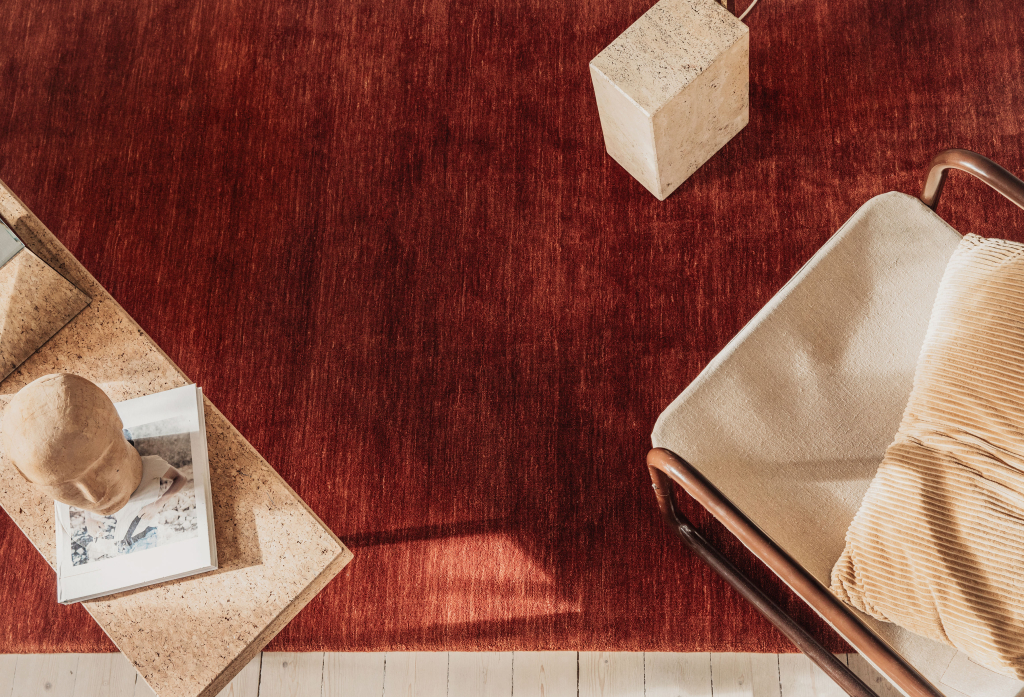
Trend-right and versatile quality rugs made by hand using yarn or thread on a loom. Handloom rugs, just like Hand-tufted rugs, offer great value for money as they are less costly and produced more rapidly than hand-knotted rugs. However, they are not as stiff and sturdy as hand-knotted or hand-tufted rugs.
Pros:
- Hand-loomed rugs can typically be produced more quickly and affordably than hand-knotted rugs.
- They come in several forms, colors, and styles.
- In addition to being suited for high-traffic locations, they are also easy to maintain.
- They will feel softer to the touch and when walking on them because they don’t have a backing and typically have fewer knots per square inch than hand-knotted or hand-tufted rugs.
- This is a beautiful base rug to put in any room to help the design of the space come together more cohesively.
- These rugs also have great insulation qualities. However, the effect is somewhat lower than hand-knotted rugs because they often have a lower knot density.
Cons:
- A hand-loomed rug’s pile may begin to flatten or wear out over time compared to a hand-knotted rug.
- Colors may fade when exposed to direct sunlight.
- Handloom rugs may shed for some time after purchase. However, it’s important to note that shedding is a normal process for wool rugs, and it usually stops after a while, but it’s better to be aware of it when purchasing a hand-tufted rug.
- The newer techniques only allow for basic geometric or single-color designs.
Machine-made rugs
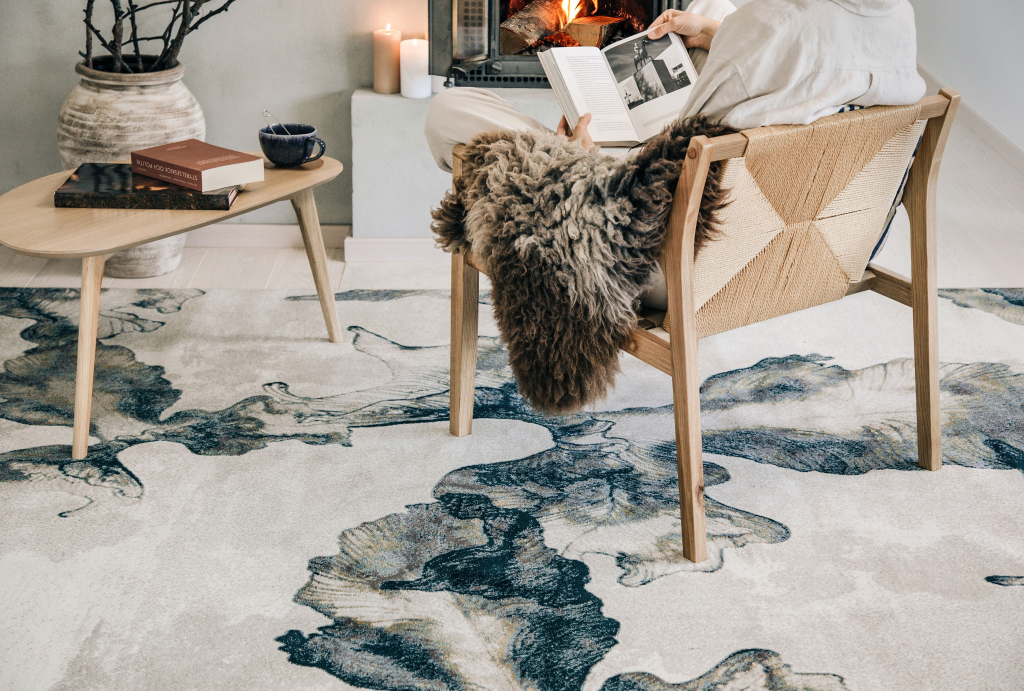
These trendy rugs can easily be produced in larger volumes by machines mimicking the hand-knotting and knotting processes used in traditional rugs. They come in various shapes and styles and may be created at a lower cost than handmade rugs. However, machine-made rugs are not as long-lasting as handmade rugs and tend to wear out more quickly.
Pros:
- Machine-made rugs are typically very affordable, making them an excellent option for those on a budget.
- These rugs are made with a high level of consistency, meaning each rug will look similar to the next, making them an excellent option for those looking for a specific look.
- They come in various shapes, colors, styles, and sizes.
- Easy to clean and maintain.
- Limited amount of shedding.
- A great choice for those who are allergic to things like natural materials.
Cons:
- The pile of machine-made rugs might flatten or wear out in a shorter amount of time than handmade rugs.
- Compared to hand-knotted rugs, the patterns of machine-made rugs are easier to reproduce, making them less special.
- They can’t compare to hand-knotted, hand-tufted, or hand-loomed rugs in terms of coziness, individualism, or spirit.
Flat-weave rugs
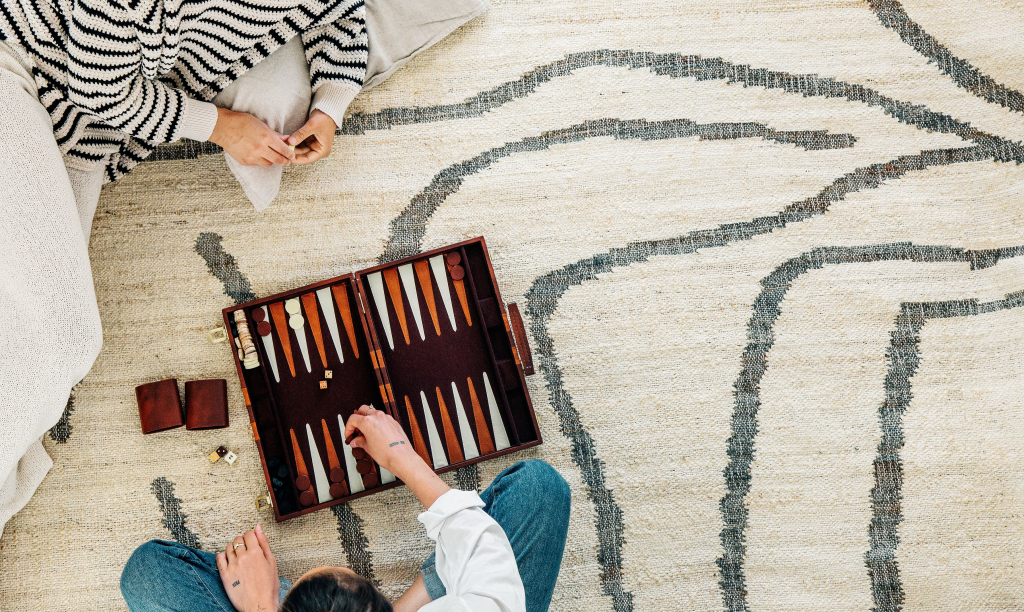
A flat-weave rug is made by weaving yarn or thread on a loom without making a pile. They tend to be slimmer and have a less put-together look. The most typical examples of flat-weave rugs are the Kilim and the Dhurrie.
Pros:
- Flatweave rugs can be used in many settings, such as indoor or outdoor spaces, high-traffic areas, and high-moisture areas, depending on the material composition. They can also be used as wall hangings due to their low weight.
- Because they lack a pile to fray or flatten over time, flat-weave rugs are quite long-lasting and hardy, being able to handle much foot traffic without showing wear and tear.
- If you look at the unique items and styles, like Afghan Old Style rugs, with their one-of-a-kind, laid-back aesthetic, they infuse any space with a dose of bohemia and ethnic flair.
Cons:
- Compared to other rug varieties like shag or pile, flat-weave rugs are noticeably stiffer, more coarse, and less cushiony underfoot.
- They won’t be a good choice for colder areas since they don’t give as much insulation or warmth as other kinds of rugs.
- Due to their lack of a pile, they may not be as effective at concealing spills and stains as other rugs.
- Since these rugs don’t weigh that much, we advise putting an underlay rug underneath to keep it in place and stop people from potentially slipping.
Shaggy rugs
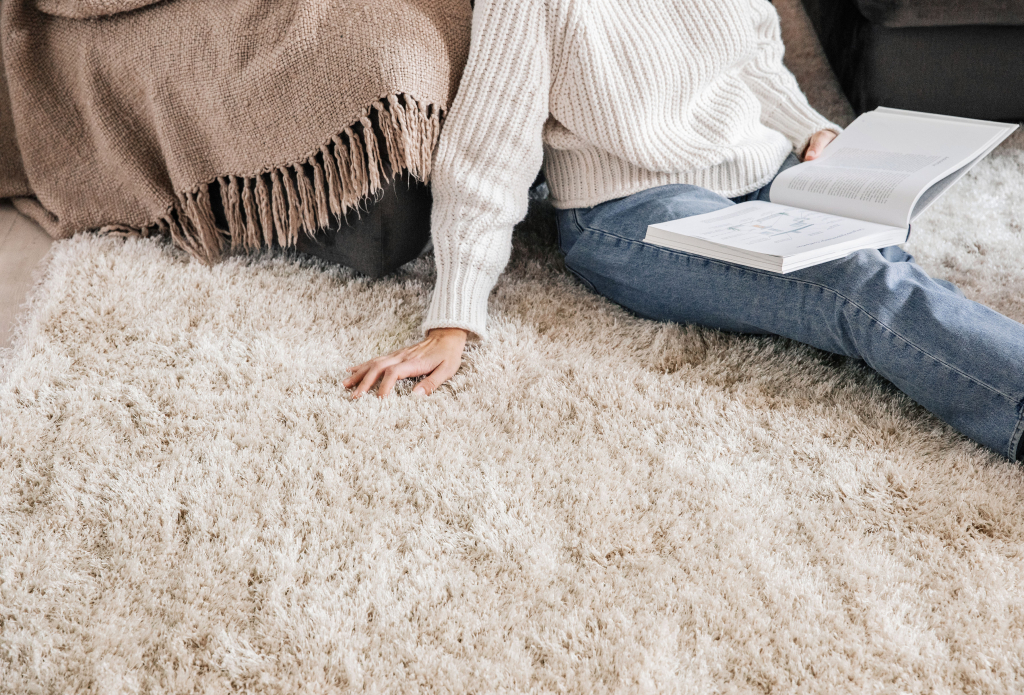
These rugs can be produced in a wide range of materials, including wool, cotton, and synthetic yarns, and have a thick, plush texture. Shaggy rugs are recognized for being warm and cozy, and their shaggy, fluffy look helps convey that.
Pros:
- Shaggy rugs are perfect for bedrooms and living rooms because of how soft and plush they are.
- They’re ideal for colder areas or houses with hard surfaces like hardwood because they provide an additional layer of insulation and warmth.
- They have a one-of-a-kind and fashionable look that may spruce up a space by adding a little texture and a new perspective.
- You can pick one that fits in with the style of your home, thanks to the variety of colors and designs available.
Cons:
- The pile of a shag rug may easily get matted or flattened, making it less durable than other rugs.
- Shaggy rugs shouldn’t be used in locations with high foot traffic because they are more easily damaged.
- They may be challenging to clean or maintain since dust and debris can become trapped in the pile.
- There may be better choices for a more sophisticated or formal setting.
In conclusion, there are several aspects you should consider when choosing a rug for your project.
The rug’s intended use and the space where it will be placed are essential factors that should be considered. Also, your own, or the client’s, sense of style and budget will play a role in the final decision.
Before choosing a rug for your project, you should carefully weigh the pros and cons of the different kinds of rugs and materials. Hand-knotted rugs, for example, are often seen as works of art and are known for their high quality and durability, but they can be quite expensive. Contrarily, machine-made rugs are often less expensive than hand-knotted ones, but they may be less high-quality and with a shorter lifespan.
The choice of material is also a major consideration. Synthetic fibers like polyester, nylon, and acrylic are cheaper, resist stains, and are easily cleaned and maintained. On the other hand, natural fibers like wool are known for being strong, durable, warm, and soft.
We hope that having access to this information will make it easier for you to select a rug that meets your needs. A rug is a great way to bring warmth and style to any room or open area, and I am sure that you will be able to find what you need from our assortment, whether you’re seeking a hand-knotted piece of art or a machine-made option for a more cohesive look.
Email us at contact@rugvista.trade if you have any questions about our offer and products or suggestions for other subjects you’d like us to cover.
